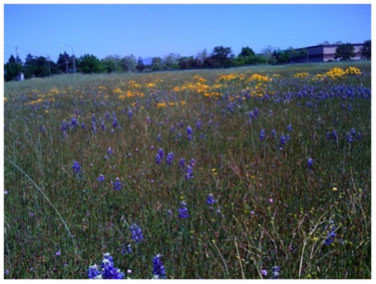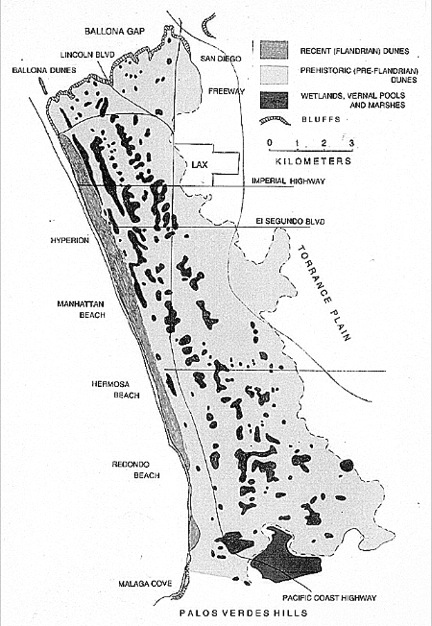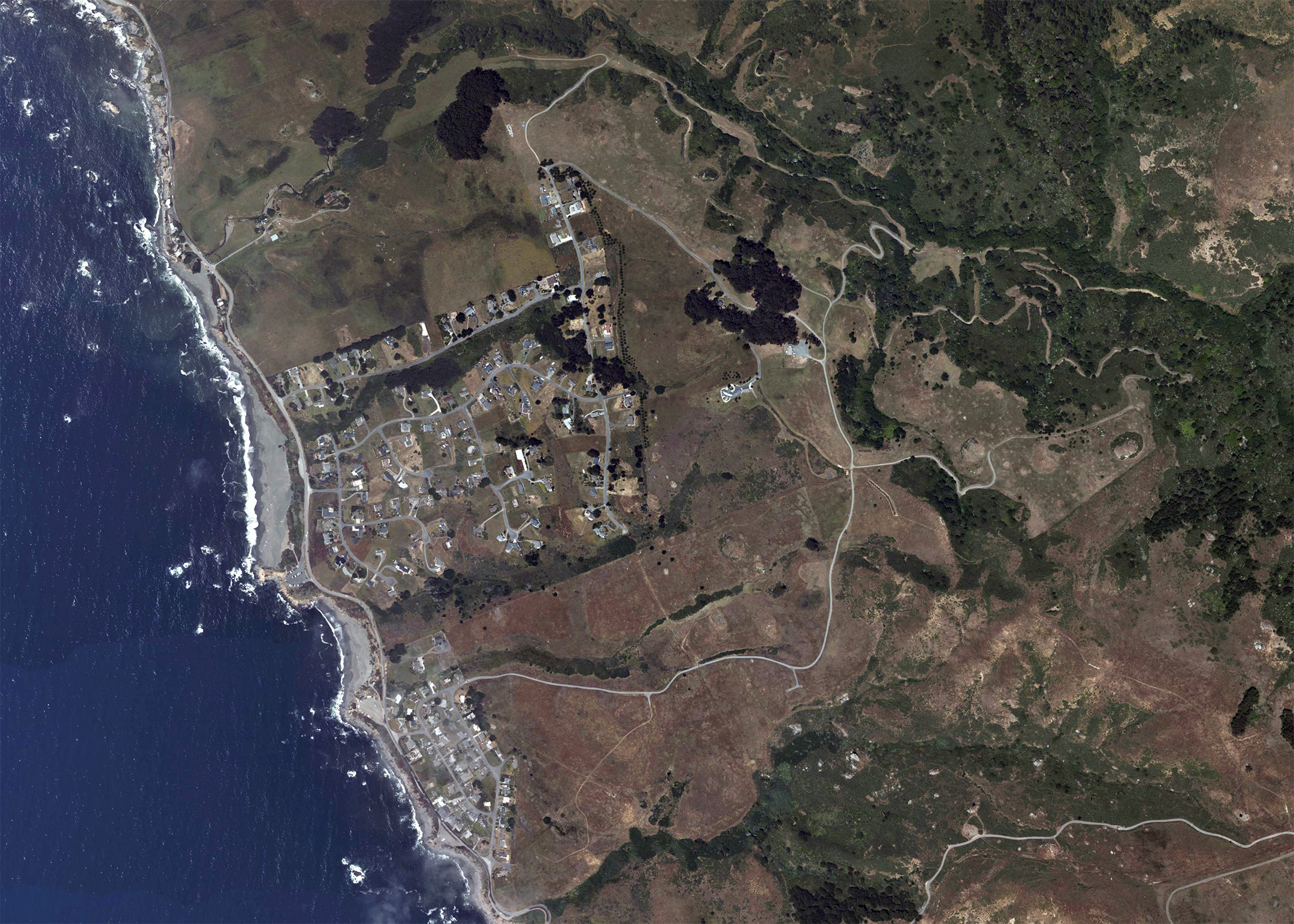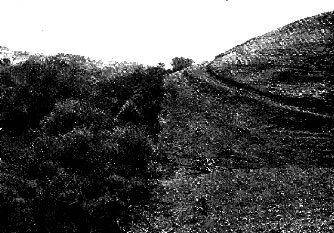Management:
Status & Threats
Temperate grasslands are now the most altered ecosystem on the planet, and the most endangered habitat in most countries where they occur.
A Disappearing Resource
California grassland losses (Noss and Peters 1995):
- 99% decrease in native grassland (from 22 million to 220,000 acres).
- North coastal bunchgrass decreased 90%.
- 26% of native grasslands were destroyed between 1945 and 1980.
- 8,653% increase in non-native annual grassland.
- 99.9% decrease in needlegrass steppe.
- Vernal pools reduced 99%.
Noss and Peters (1995) provide a sobering summary of the state of California grasslands. Agriculture, invasion by exotic species, development and other human-related activities has reduced California native grasslands by 99%. As a result, California grasslands are among 21 of the most-endangered ecosystems in the United State. More than 25 grassland species are threatened or endangered (Noss and Peters 1995). Coastal prairie have fared only slightly better than California grasslands as a whole: only 10% of the native coastal prairie communities remain (Noss and Peters 1995).
Threats
Coastal grasslands continue to be threatened by various factors (Norton et al. 2007; Wade Belew, CNGA Presentation 2011) including:
- Habitat Conversion and Fragmentation
- Invasive Species
- Reduced Disturbance
- Fire Suppression
- Altered Watershed Hydrology
- Limited Knowledge and Under-Appreciation
- Air pollution
- Climate change
Habitat Conversion and Fragmentation

Coastal grasslands continue to be desirable areas for development and agriculture (CNPS 2001). Over 24% of the coastal prairie from San Francisco north along the western slopes of California’s north coast has been urbanized, the most of any other major plant community in the United States, and this is thought to be a gross underestimate (Ford and Hayes 2007; Loveland and Hutcheson 1995).
Los Angeles is a case study for coastal prairie loss. Before the extensive urban development that now characterizes the Los Angeles area, 95 square kilometers (37 square miles) of coastal prairie was rich in wildflowers and dotted with vernal pools (Mattoni and Longcore 1997). The last significant remnant of Los Angeles coastal prairie, located near the Los Angeles International Airport, was destroyed in the late 1960s.

Flat treeless plains with deep, fertile soils means grasslands are ideal landscapes for agriculture. Cultivation and mis- managed grazing destroy indigenous species and the natural landscape features necessary for their support.
Invasive Species
California’s annual grasslands, occupying extensive areas in the Central Valley and along the Pacific Coast, form a vegetation type that is unique in North America: a distinct and extensive community type consisting largely of introduced species.
Grasslands dominated by non-native annuals are found throughout California. However, most of these grasslands still harbor a variety of native species, depending on their use history. The proportion of non-native plants can range from 50 to 90 % or more (Biswell 1956). Altered fire regimes, cultivation, and the long-term uncontrolled grazing that accompanied the introduction of invasive annual grasses are the major contributors to the conversion of native perennial grasslands to exotic annual-dominated grasslands and to their continued persistence (Norton, et al. 2007). Exotic annual species were purposely seeded as forage plants while others were accidentally introduced.
Because a wide range of wildlife species now depend on introduced annuals for food and shelter, the California Department of Fish & Game recommends that many of the annual plants introduced into grasslands should be considered naturalized plant species, instead of undesirable invaders, and managed as such (Kie 2005).

Reduced Disturbance
Grasslands are dynamic disturbance-dependent ecosystems that are maintained by a variety of disturbance agents such as fire and grazing. At the most basic level, fire and animals maintain grasslands by destroying tree saplings and shrubs that would eventually colonize the area and crowd out grassland plants. Common woody invaders include coyote bush (Baccharis pillularis) and Douglas fir (Pseudotsuga menziesii). While invasion of native species is a natural process, the patchiness of this diminished habitat has made these process a threat. In some cases, managers must decide between managing for either grassland or the shrubby coastal scrub habitat. This is because both communities, although once widespread, are now considered rare and endangered habitats (Ford and Hayes 2007).
Fire Suppression
Fire suppression, which began in earnest in the 1930s, has increased the length of the fire return interval in grasslands. Greenlee and Langenheim (1990) estimate the mean fire return interval in prairies in recent time is from 20-30 years, up from 1-15 years during the lightening, aboriginal, and Spanish periods.

Removal of Domestic Grazers
California grasslands evolved with and once supported a wide variety of native animal grazers. In the 1700s, the Franciscan missionaries brought cattle and sheep with them and for the next 200 years California’s grasslands were increasingly degraded from poor grazing management practices.
For many decades, grassland conservation efforts focused on retiring cattle and sheep operations from the land. Biswell (1956) discussed conservation areas under “grazing protection” as early as the 1930s. It was thought that grazing removal led to an increase in perennial grasses. Instead, non-native annuals such as ripgut brome (Bromus diandrus) took over. In coastal areas some of the ripgut brome was eventually replaced by the native creeping wild-rye grass (Elymus triticoides), a native rhizomatous grass, along with tall growing non-natives weeds such as black mustard (Brassica nigra), poison hemlock (Conium maculatum) (Biswell 1956).
The timing and intensity of domestic grazing can have varying effects on native plants and animals. Mismanaged grazing reduces grassland productivity and biodiversity while increasing erosion and the number of unwanted species. Well-managed grazing operations can maintain quality grassland habitat for native plants and animals while preventing erosion and the invasion of woody shrubs.
From 57% to 80% of California’s grasslands are privately owned and managed by ranchers (California Partners in Flight 2000). Ranchers have joined with environmentalists and resource professionals in groups like the California Rangeland Conservation Coalition (http://www.carangeland.org/) to work towards their shared goal of healthy intact grassland ecosystems.
Litter Accumulation
In the absence of disturbances, such as fire and grazing, a thick layer of plant litter accumulates in grasslands. The effects of litter has been shown to be the primary mechanism controlling species diversity in fescue grasslands in Canada (Lamb 2008). Litter accumulation can reduce species diversity through shading, physically interfering with plant growth, alteration of germination cues, providing shelter for invertebrate herbivores and seed predators and encouraging pathogens (Facelli and Pickett 1991; Lamb 2008; Xiong and Nilsson 1999). Litter accumulation favors annual introduced grasses, such as soft chess (Bromus hordeaceous), over annual wildflowers that germinate on exposed soil and do not germinate when covered by layers of litter (Howard 1998).
Biswell (1956) noted a common pattern when grazing is removed from California annual grasslands that were formerly heavily grazed: the grasslands changed from being dominated by forbs to soft chess (Bromus hordeaceous), to slender oat (Avena barbata), and finally to ripgut brome (Bromus diandrus), a change largely due to litter accumulation (Biswell 1956). Accumulated forage and litter favors many less desirable species, such as ripgut brome (Bromus diandrus), which has the ability to tolerate shade and has seeds with long barbs (awns) with that are well adapted to work their way down through the litter barrier to the mineral soil (Biswell 1956).
Air Pollution
Nitrogen inputs from human activities into ecosystems in the United States doubled between 1961 and 1997, primarily from inorganic nitrogen fertilizers and nitrogen oxide emissions from fossil fuels (Fenn, et al. 2003). Grasslands accumulate and store nitrogen applied in inorganic fertilizers and also deposited from air pollution (primarily from the nitrogen oxides resulting from the burning of fossil fuels). The influx of large amounts of nitrogen into grasslands can have deleterious consequences for biodiversity:
Nitrogen deposition from auto exhaust has been linked to the increase of Italian ryegrass (Festuca perennis, formerly Lolium perenne) in serpentine grasslands—grasslands with harsh, nutrient poor soils that often act as refuges for native plants—in the San Francisco Bay area (Harrison and Viers 2007:154).
Nitrogen pollution can reduce the diversity of herbaceous species and can negatively affect microbial activity, decreasing the rate of decomposition of organic matter (National Environment Research Council).
Automobile pollution from Highway 101 has been cited as a threat to endangered Checkerspot butterfly (Eilerin 2006).